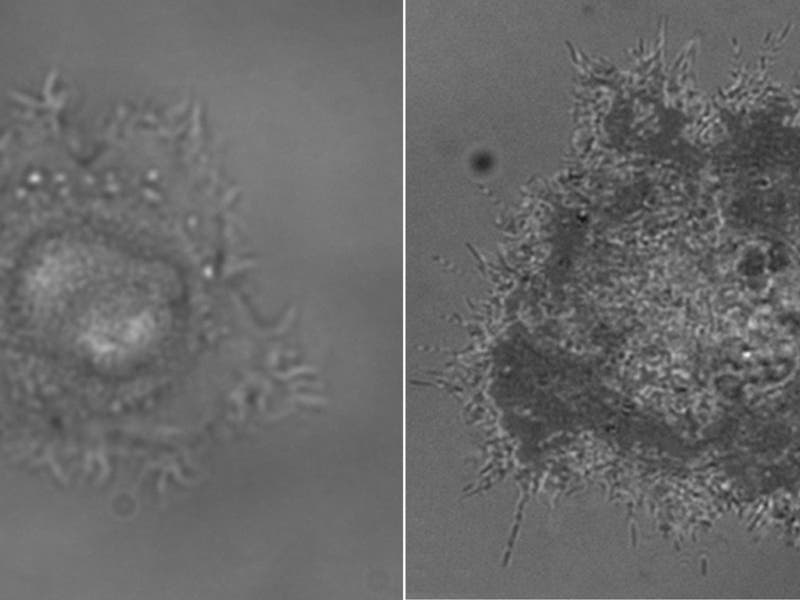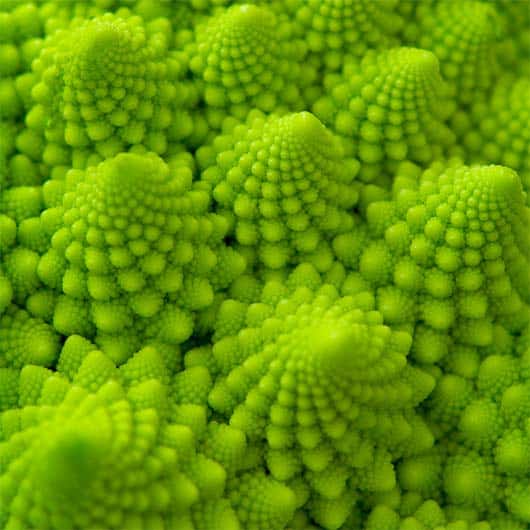Fractals are non-regular geometric shapes that have the same degree of non-regularity on all scales. Fractals are the kind of shapes we see in nature, basically, and even though the term was first coined only a coupled of decades ago or if this is the first time you’ve heard about fractals, chances have it that you already interact with them on a daily basis. Think of the spirals of pinecone seeds, leaves, trees and rivers (these look like trees, ever noticed that?), electricity driven patterns, galaxies or good old broccoli!
Fractal geometry, due to its ubiquity, has always fascinated scientists. Now, researchers at Max Planck Institute for Intelligent Systems in Stuttgart and the University of Heidelberg found that cancer cells can be very accurately characterized using fractal geometry.

The cell on the right displays a greater degree of fractality than that on the left, which is an indication of its stronger aggressiveness. © MPI for Intelligent Systems
Apparently, cancer cells exhibit a high degree of fractality – a measure of the statistical distribution of the irregularities, of the cell contours – or at least much larger than normal cells. More often than not, chaotic phenomena display an amazingly consistent order when scaled enough. Tumors generally grow chaotically, causing very irregular convexities of varying size on the cell surface.
Fractals, everywhere?
The researchers employed a mathematical method, combined with image recognition software, to see whether progression can be reliably assessed in a cell simply by studying fractals. By studying the statistical distribution of the occurrence of structural details on the surface of different tumour cells, the team of researchers were able to identify cells. Not only that, but the method actually proved to be faster than conventional biopsy and to top things over, it also proved capable of distinguishing between different tumours.

The images show the same cell in an RICM image (on the right) and a bright-field image (left). Small cell protrusions, invisible in bright-field images, can be visualised with RICM. © MPI for Intelligent Systems
Diagnosing cancer today is an invasive and complicated procedure. Tissue samples are collected, stained using specific antibodies and biomarkers and then studied for specific markers. This particular method is expensive and only correctly diagnoses 85% of the time.
Using fractal geometry, team of researchers were able to identify cancer cells more reliably and much faster since the cells can be studied under a microscope without requiring special preparation. Next, the scientists plan on implementing the method in clinical trials and study different malignant cell lines and primary cells.
Marker-Free Phenotyping of Tumor Cells by Fractal Analysis of Reflection Interference Contrast Microscopy Images, Nano Letters, online publication 30 September 2013; DOI: 10.1021/nl4030402










